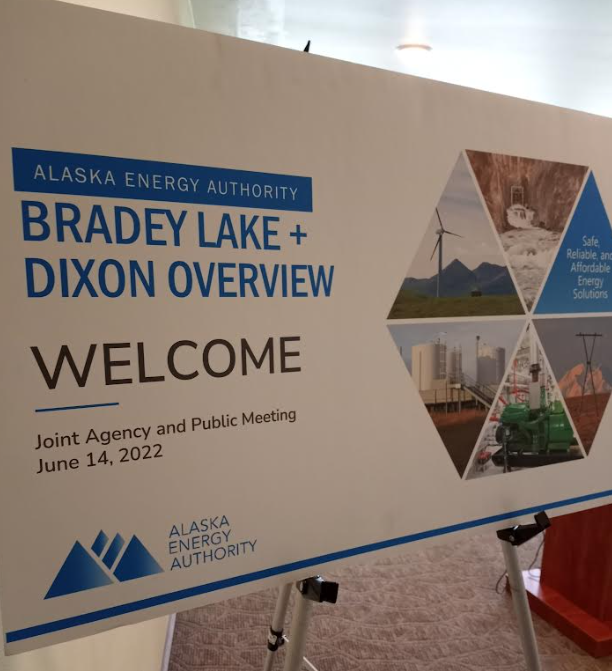The Alaska Energy Authority (AEA) is pursuing a Federal Energy Regulatory Commission (FERC) license amendment associated with the existing 120-megawatt (MW) Bradley Lake Hydroelectric Project (Bradley Lake Project, FERC No. P-8221).
The purpose of the amendment is to gain authorization to divert water from the Dixon Glacier to generate additional power. The Bradley Lake Project has an installed capacity of 120 megawatts and is operated by the Homer Electric Association on behalf of AEA. The Railbelt utilities (75% of state population) share in the energy and costs of the Bradley Lake Project. The Bradley Lake Project is located on the Bradley River in the Kenai Peninsula Borough northeast of the town of Homer in Southcentral Alaska.
AEA is providing an update to the Proposed Action and to the Process Plan Schedule for the proposed license amendment.
The Alaska Energy Authority (AEA) initiated the pre-filing amendment process by filing its Initial Consultation Document (ICD) on April 27, 2022.
The ICD described two alternative project configurations for evaluation. The Dixon to Bradley Lake (DB) alternative involves an interbasin transfer of water from the toe of the Dixon glacier to the southwestern portion of Bradley Lake. The Dixon to Martin River (DM) alternative directs the water to a new powerhouse on the Martin River and describes facilities that would be necessary to construct and operate the powerhouse.
AEA has continued to review the Project feasibility and economics associated with the proposed alternatives. Based on this additional review, AEA no longer intends to pursue the DM alternative, and AEA will focus additional feasibility assessment and associated study needs on the DB alternative described in the Initial Consultation Document (ICD).
Based on consultation and additional review, AEA decided to remove consideration of the DM alternative as it would result in potential increased impacts to wildlife, wetlands, and cultural resources as compared to the DB alternative. In addition, the preliminary engineering assessment indicated that the DM alternative would result in greater capita] and operational costs and reduced potential energy than the DB alternative and was determined to not as adequately fit the needs of AEA and the Railbelt utilities.
Additional changes to the Proposed Action may be warranted including how construction access may be managed. As the study plan process is re-initiated, these changes will be incorporated into the study plan and goals and objectives will be adjusted accordingly.
Given the further refinement of the Proposed Action, AEA intends to develop a Revised Study Plan. AEA will consider those studies that remain applicable to the updated Proposed Action (i.e., Dixon to Bradley Lake Alternative) and associated comments and study requests provided by the agencies and stakeholders. AEA also intends to continue collecting data to better inform the preliminary feasibility assessment and proposed study methodologies. AEA intends to provide the Revised Study Plan and a summary of the 2023 field season studies for agency review and comment in January 2024. The RSP will address comments received in response to the first round of study plans and will also identify where scope and scale of the revised study plan has been altered in response to removal of the DM alternative.

